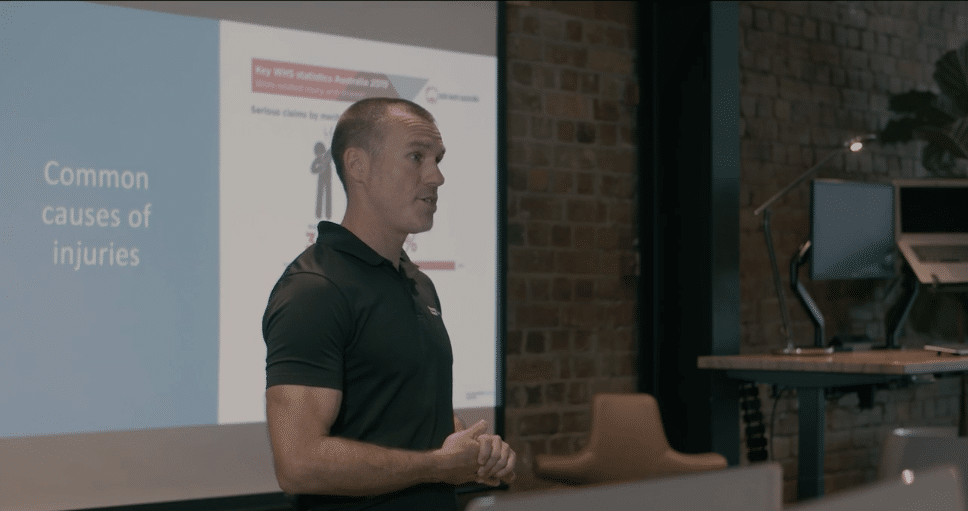The Importance of Manual Handling Training: Why It Matters and What You Need to Know
Author: Wade Brennan, Occupational Health Physiotherapist
As an employer, ensuring the safety and wellbeing of your employees is a top priority. One area that is often overlooked is manual handling training. Manual handling refers to the process of lifting, carrying, pushing, or pulling objects in the workplace, and it can pose a significant risk to employee health and safety if not done correctly. In fact it is the number 1 cause of injury at work in Australia.
In this blog post, we will discuss the importance of manual handling training and what you need to know to keep your employees safe.
Why is Manual Handling Training Important?
Manual handling injuries are a common cause of workplace accidents and can result in significant physical and financial costs. Injuries such as strains, sprains, and back injuries can result in a loss of productivity and increased absenteeism. Additionally, workplace accidents can result in legal claims, which can be financially damaging to a company.
Manual handling training is essential in preventing workplace injuries and ensuring the safety of your employees. Training programs provide employees with the knowledge and skills needed to safely handle materials and reduce the risk of accidents.
What Should Be Included in Manual Handling Training?
‘How to lift’ training programs do not reduce the incidence of musculoskeletal disorders. Despite this, a recent survey found that almost 80 percent of employers had provided ‘how to lift’ training to their workers in the past two years (Oakman, Bell, & Lambert, 2021).
Australian Codes of Practice/Compliance Codes outline that training should cover:
• manual task risk management, including hazardous manual task risk factors and sources of risk
• specific manual task risks and the measures in place to control them
• how to perform manual tasks safely, including the use of mechanical aids, tools, equipment and safe work procedures
• how to report a problem or maintenance issues
It’s essential to ensure that all employees who are involved in manual handling tasks receive training and that training is regularly refreshed to ensure that the techniques are being used correctly.
What Are the Benefits of Manual Handling Training?
Investing in manual handling training can provide several benefits to your company, including:
- Improved employee safety: Employees who receive manual handling training are better equipped to handle materials safely, reducing the risk of accidents and injuries.
- Increased productivity: When employees are trained in proper manual handling techniques, they can work more efficiently and effectively, reducing the time and effort required to complete tasks.
- Reduced absenteeism: Workplace accidents can result in employee absenteeism, resulting in lost productivity. Manual handling training can help reduce the number of accidents and injuries, reducing the risk of absenteeism.
- Compliance with legal requirements: In many countries, there are legal requirements for employers to provide manual handling training to their employees. Failure to comply with these requirements can result in legal action and fines.
Conclusion
Manual handling training is an essential investment in the safety and wellbeing of your employees. Providing training on proper lifting techniques, the use of equipment, and the identification of hazards can help prevent workplace accidents, reduce absenteeism, and improve productivity. It’s essential to ensure that all employees involved in manual handling tasks receive adequate training and that the training is regularly refreshed to ensure that the techniques are being used correctly. By investing in manual handling training, you can create a safer and more productive workplace for everyone.
If you would like to find out more about what our manual handling training services, please click the link below:
https://corporateworkhealth.com.au/custom-manual-handling-training-courses/
This blog post was written by Occupational Health Physiotherapist and Director of Corporate Work Health Australia Wade Brennan.


